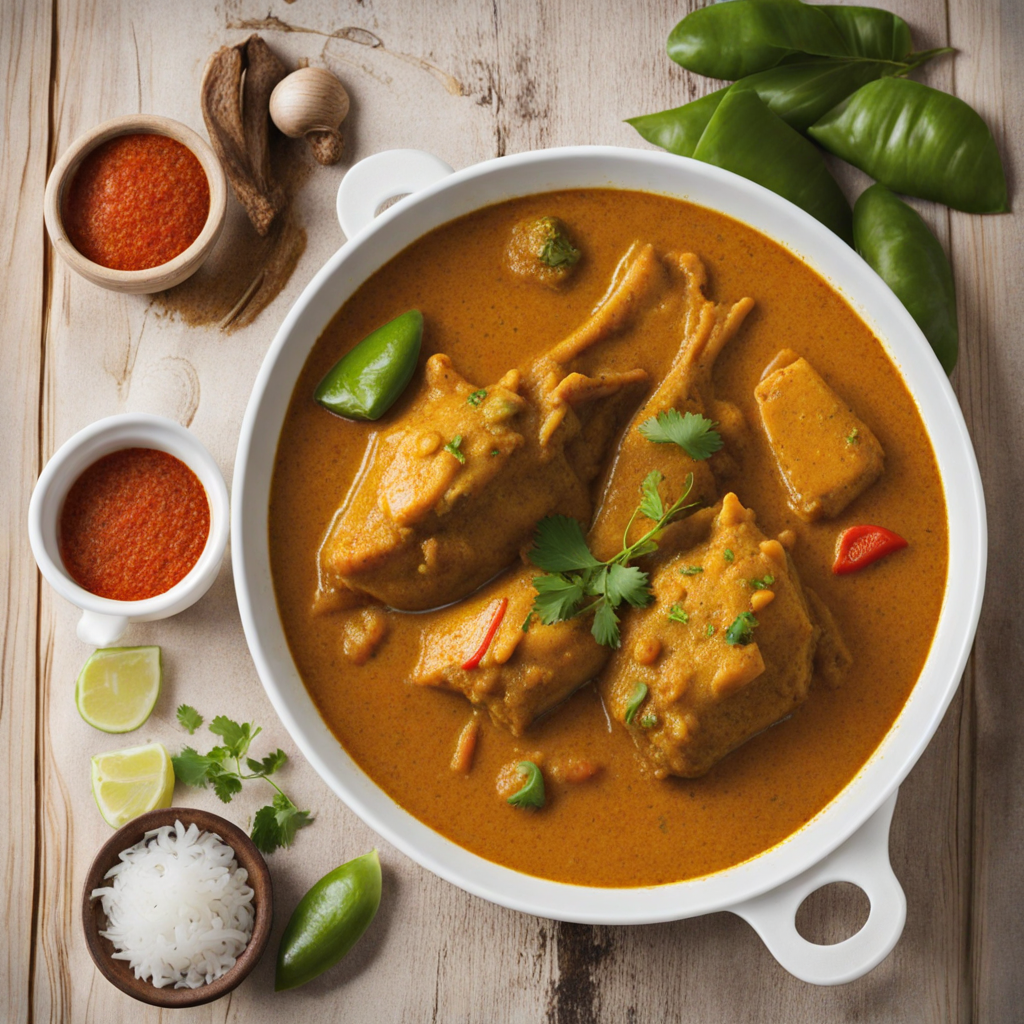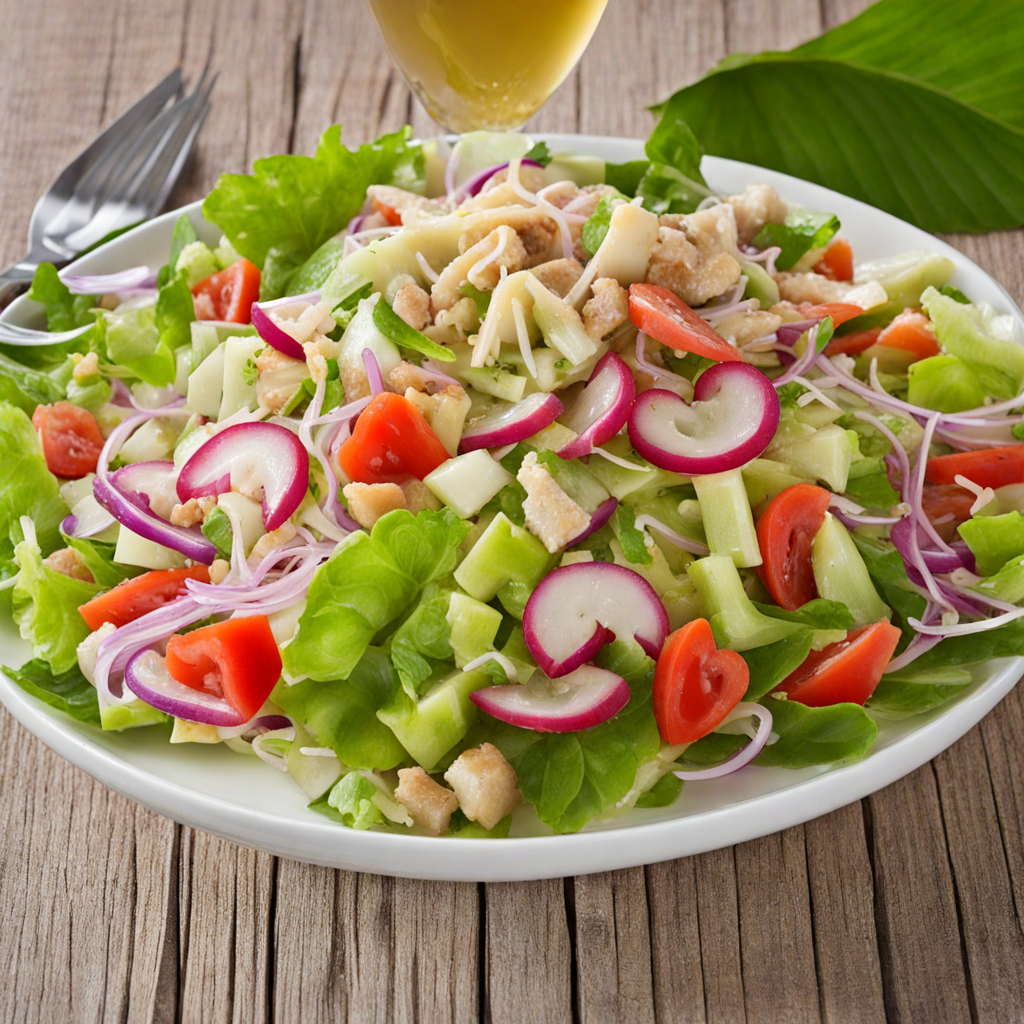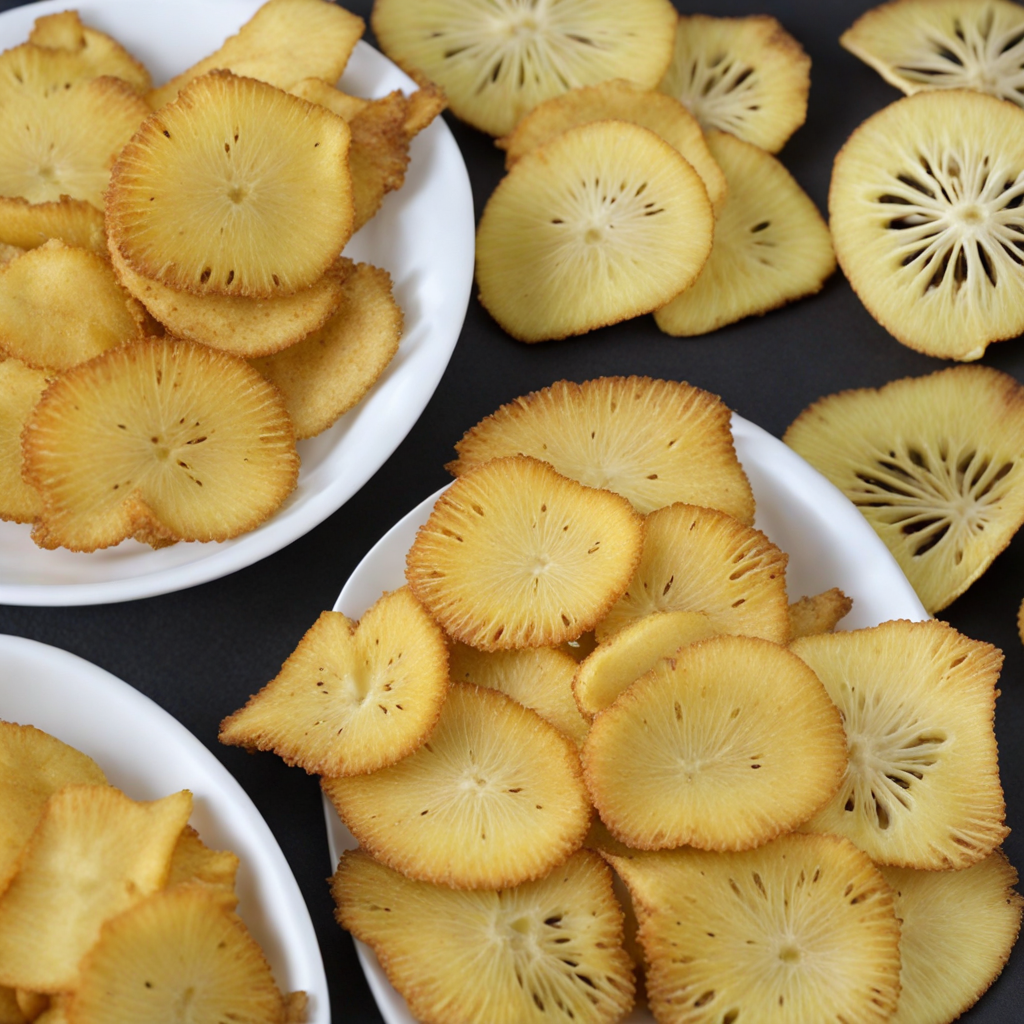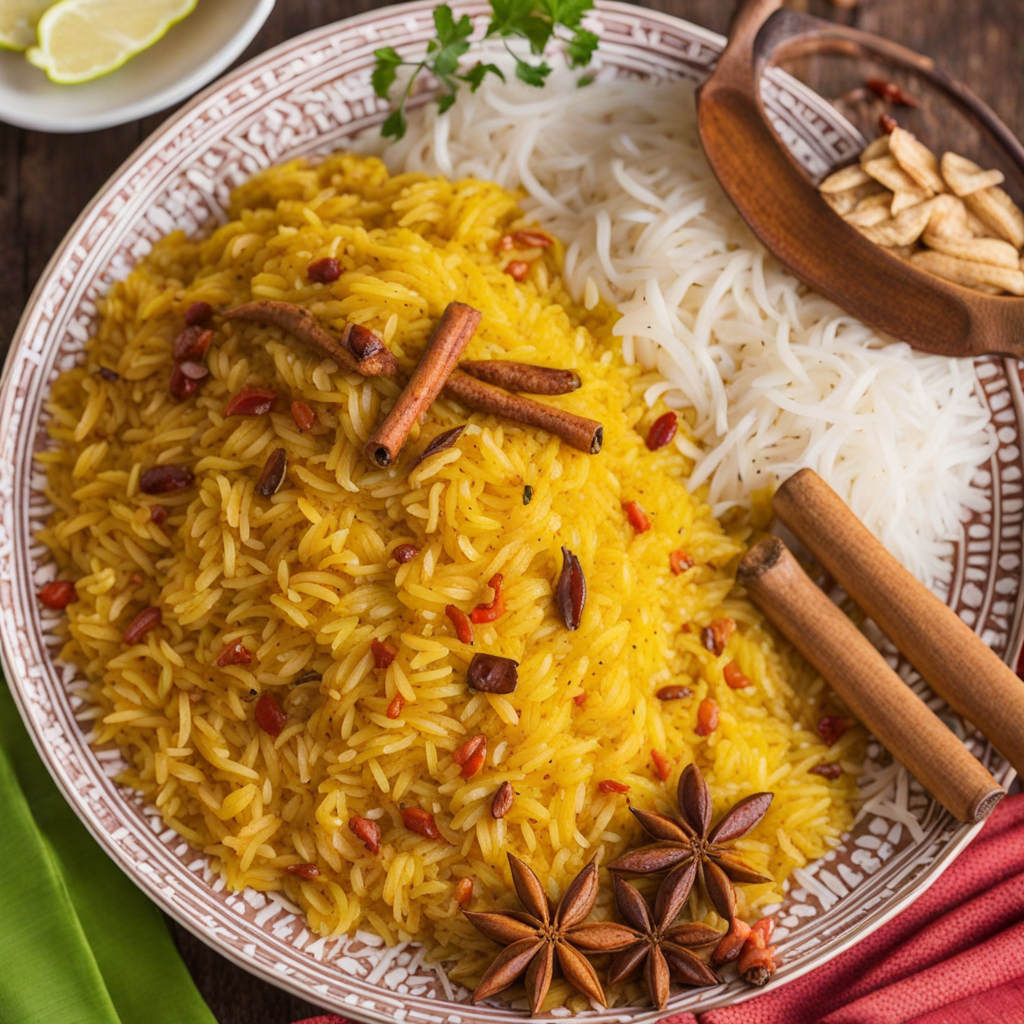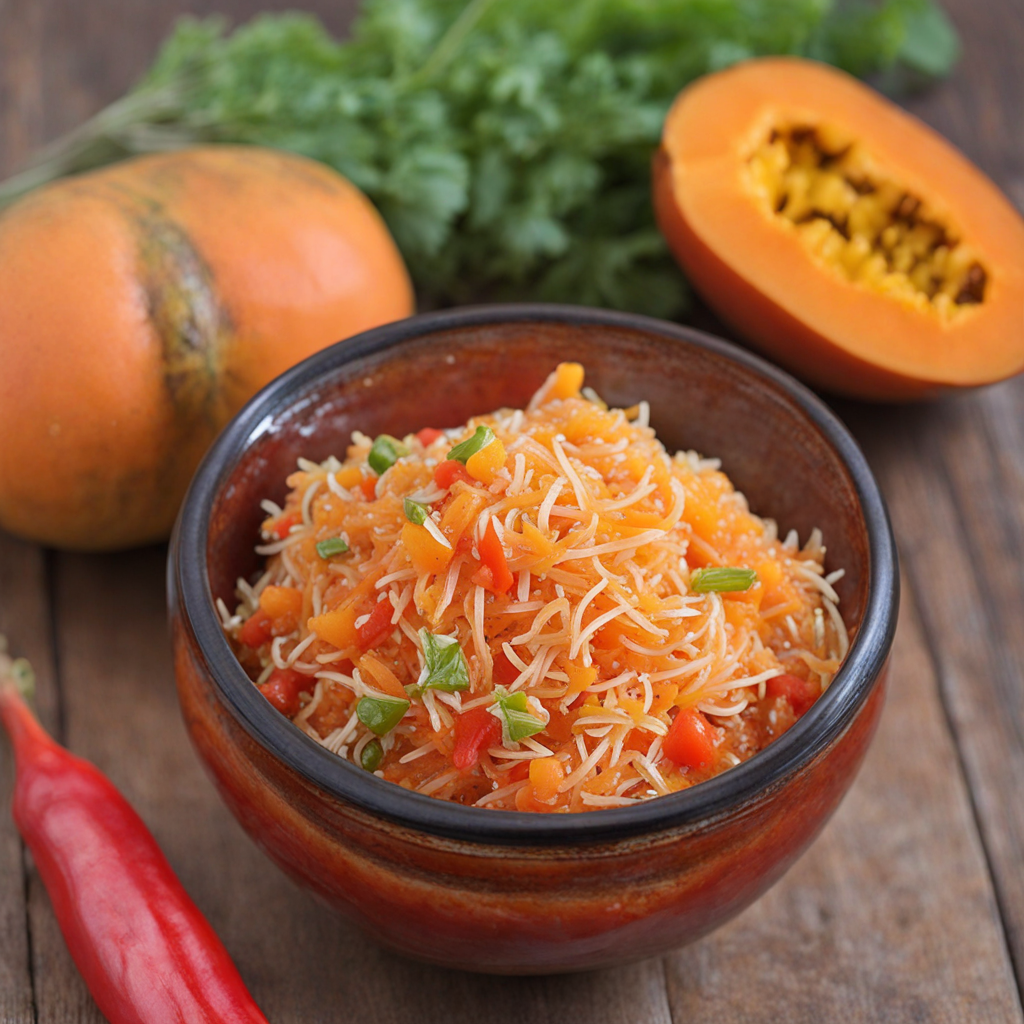Fish Curry
Fish Curry from Seychelles is a vibrant and aromatic dish that showcases the rich culinary traditions of the islands. The curry is typically made with fresh fish, which is often caught locally, ensuring the dish is bursting with flavor and freshness. The fish is marinated in a blend of spices, including turmeric, coriander, and cumin, which not only add depth to the taste but also impart a beautiful golden hue to the curry. The use of coconut milk in the sauce lends a creamy texture that perfectly balances the spices, creating a dish that is both comforting and exotic. In addition to the fish and coconut milk, Seychelles Fish Curry often incorporates a variety of vegetables such as tomatoes, onions, and bell peppers, contributing to a colorful and nutritious meal. The vegetables are sautéed with garlic and ginger, enhancing the overall flavor profile. The curry may also be seasoned with fresh herbs like cilantro and curry leaves, which provide a fragrant finish, making each bite a delightful experience. This dish is typically served over a bed of steamed rice or alongside flatbreads, allowing you to soak up the luscious sauce. The combination of fresh ingredients, aromatic spices, and the creamy coconut base creates a symphony of flavors that transport you to the tropical paradise of Seychelles. Each mouthful is a celebration of the island's culinary heritage, making Fish Curry a must-try for anyone looking to explore new and exciting tastes.
How It Became This Dish
The Flavorful Journey of Kari Pwason: A Culinary Gem of Seychelles #### Origin and Cultural Roots Kari Pwason, a delightful fish curry, is a quintessential dish from the Seychelles—a stunning archipelago in the Indian Ocean. This dish reflects the rich history and cultural tapestry of the islands, which have been influenced by various civilizations over centuries. The Seychelles is a melting pot of cultures, primarily shaped by African, French, Indian, and Chinese influences, each contributing unique flavors, techniques, and ingredients that have enriched the island's culinary landscape. The term "Kari" is derived from the Tamil word "kari," meaning curry, while "pwason" translates to "fish" in Seychellois Creole. This dish is emblematic of the Seychellois way of life, where fishing is not just a means of sustenance but a cultural practice deeply embedded in the islanders' daily existence. The surrounding waters of the Indian Ocean provide an abundance of fish, making it a primary ingredient in many local dishes, including Kari Pwason. #### Historical Influences The history of Kari Pwason is intertwined with the colonial era when the Seychelles was first settled by the French in the 18th century. French settlers brought with them culinary techniques and spices that would become integral to Seychellois cuisine. The introduction of curry spices, particularly from India, transformed local cooking practices and led to the creation of dishes that blended European and Asian flavors. As the islands evolved, so did their culinary practices. The introduction of enslaved Africans and indentured laborers, primarily from India and China, further diversified the food culture. The fusion of spices, herbs, and cooking methods from these different backgrounds gave rise to a unique culinary identity. Kari Pwason emerged as a dish that showcased this blend, incorporating local ingredients and traditional techniques. #### Ingredients and Preparation Kari Pwason typically features freshly caught fish, often marinated with a blend of spices that can include turmeric, ginger, garlic, and chili, along with aromatic herbs like thyme and coriander. The fish is usually cooked in coconut milk, which adds a creamy richness and a hint of sweetness, balancing the spiciness of the curry. The preparation of Kari Pwason is a communal activity, often involving family and friends. Islanders gather to share stories and laughter as they cook, highlighting the dish's cultural significance as a symbol of togetherness. The curry is usually served with rice, lentils, or bread, making it a hearty meal that brings people together around the dining table. #### Cultural Significance Kari Pwason is not only a dish but a cultural emblem for the Seychellois people. It embodies the islands' connection to the sea and its resources, serving as a reminder of the significance of fishing in their heritage. Fishing is often a community affair, with families participating in traditional fishing practices that have been passed down through generations. The sharing of a meal like Kari Pwason is a celebration of this connection, reinforcing bonds among families and communities. The dish is often enjoyed during festive occasions, family gatherings, and communal celebrations, symbolizing hospitality and the warmth of Seychellois culture. The act of cooking and sharing Kari Pwason becomes an opportunity to preserve traditions and share stories, allowing younger generations to connect with their heritage. #### Evolution and Modern Interpretations As Seychelles embraces globalization, Kari Pwason has evolved, incorporating new ingredients and techniques while still honoring its traditional roots. Contemporary chefs in Seychelles and abroad experiment with the dish, introducing variations that highlight sustainability and fusion culinary practices. Some may use different types of fish or include local vegetables, adapting the dish to seasonal availability and dietary preferences. Moreover, the rise of eco-tourism in Seychelles has led to a renewed interest in traditional cuisine among visitors. Travelers seek authentic culinary experiences, prompting local chefs to showcase Kari Pwason and other traditional dishes in new and engaging ways. Cooking classes, food festivals, and culinary tours now feature Kari Pwason, allowing tourists to immerse themselves in the island's gastronomic culture. #### Global Recognition and Influence Kari Pwason has gained recognition beyond the shores of Seychelles, particularly in culinary circles that celebrate world cuisines. Food bloggers, chefs, and culinary enthusiasts have embraced the dish, sharing recipes and stories that highlight its cultural significance. This global interest has not only elevated the profile of Seychellois cuisine but also fostered a deeper appreciation for the diverse influences that shape it. In recent years, there has been a growing emphasis on sustainability and the importance of preserving marine ecosystems. As a result, chefs and home cooks alike are becoming more conscious of their fish choices, opting for sustainably sourced varieties. This shift not only helps protect the ocean's resources but also encourages a more ethical approach to cooking and eating. #### Conclusion Kari Pwason is more than just a dish; it is a reflection of the history, culture, and spirit of the Seychelles. From its origins as a simple fish curry to its current status as a beloved culinary icon, Kari Pwason tells the story of an archipelago that has embraced diversity and resilience. As the world continues to explore the flavors of Seychelles, Kari Pwason stands as a testament to the richness of its culinary heritage—a dish that not only nourishes the body but also connects people to their past and to one another. In a world where food often transcends borders, Kari Pwason serves as a delicious reminder of the importance of tradition, community, and the stories that are woven into every bite. Whether enjoyed in the vibrant markets of Victoria or at a cozy dinner table, Kari Pwason will forever remain a cherished part of Seychellois culture and identity, capturing the essence of a paradise that thrives on the flavors of the sea.
You may like
Discover local flavors from Seychelles


